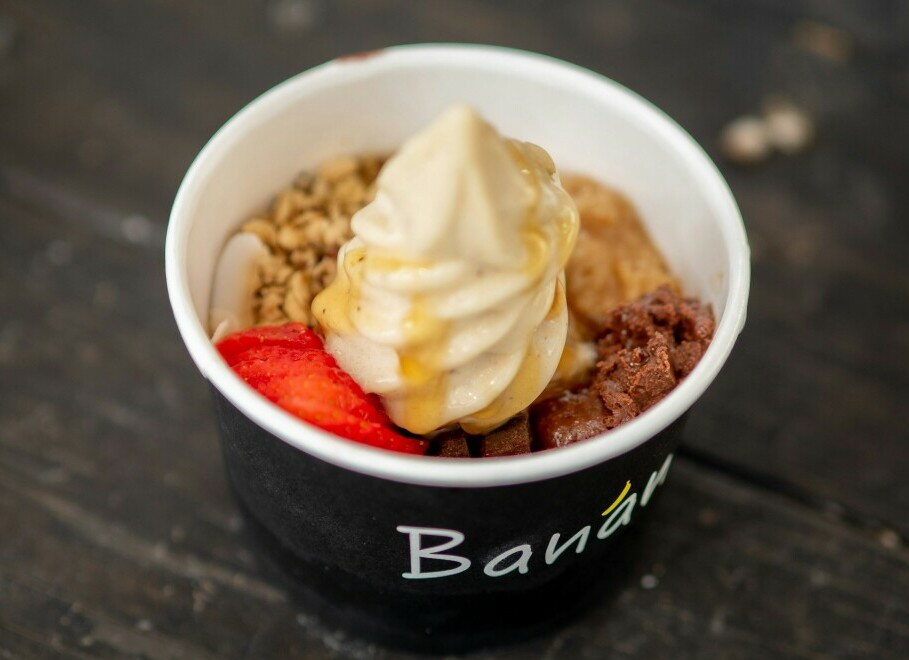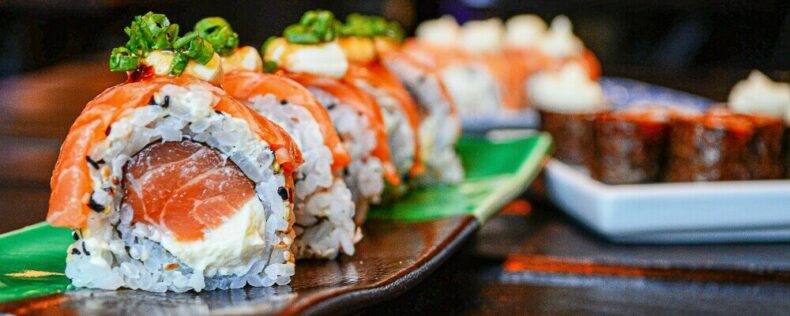Most people understand that in order to diet and lose weight, it’s important to watch how many calories you eat and where those calories are coming from. However, although you might think the foods you’re consuming are all pretty healthy, is that actually the case? In this post, I’ll reveal several foods that most people perceive as being healthy, yet are actually foods to avoid when dieting, and in general, limit your consumption of.
Often times, there are foods we tend to think of as being nutritious and low in calories, but when you actually look at the ingredients and nutrition facts, that turns out not to be the case at all. They may be a lot more calorie-dense than you realize, or contain certain ingredients that just aren’t all that good for you. That being said, let’s take a look at seven popular foods for which this can often be the case.
1. Salad
Ironically, the first item on the list is probably the most stereotypical example of dieting food. While vegetables are very healthy and light, salads often end up being quite high in calories due to excess toppings like shredded cheese, bacon bits, and croutons. Plus, many people like to drench their salads in rich, creamy dressings like ranch or Caesar, which not only adds an enormous amount of calories, but also introduces lots of artificial ingredients and unhealthy fats into your diet.
If your goal is to be healthy and lose weight, then make sure the items you’re putting into your salad can actually enable you to achieve these goals. Stick to ingredients like fresh fruits and vegetables, seeds, beans, and lean protein. For dressings, choose options that are low in oil and fat, and even then, be mindful of how much you’re using each time.
2. Sweetened Oatmeal

Here’s another item that may come as quite a surprise. Oatmeal seems like it would be a very healthy food, and if we’re talking about oatmeal on its own, you’d be right. Oatmeal is a nutritious and filling food, which makes it a great option for dieting. However, the problem is that many people turn to flavored, instant oatmeal, or add heaping amounts of sugar when they make their own oatmeal.
In either case, people often end up consuming high levels of sugar with their oatmeal, which ends up being a net negative. Not only does sugar contain excess calories and contribute towards long-term health problems when consumed in large quantities, it also doesn’t provide any nutritional value. It can be a quick source of energy, but it’ll also leave you feeling tired and hungry again soon after.
Instead, stick with plain oatmeal. If you just can’t stand its bland taste, use a minimal amount of sugar or honey to sweeten it ever so slightly, but you can also try mixing it with fruit to make the flavors more interesting.
3. Sushi
While sushi isn’t oily or greasy, uses relatively clean ingredients, and has a decent amount of protein, the problem is that sushi rolls usually contain a lot of rice. Rice, especially the kind used in sushi, is a very refined grain, which means it mostly contains carbohydrates in the form of sugar. As mentioned above, sugar is pretty much empty calories with no nutritional value. Especially if you’re consuming multiple rolls in one sitting, you’re probably taking in way more rice, and way more of these empty calories, than you realize.
Because of this, sashimi, which is raw fish served without rice, is a much healthier and leaner option if you’re trying to lose weight. That being said, while I personally love sashimi, I know the taste and texture might be hard to stomach for some. If you can’t get accustomed to only eating raw fish, it’s fine to continue having sushi rolls, but just be more aware of how much you eat knowing that it’s not quite as healthy and low in calories as you might’ve thought.
4. Fruit Juice

When I was a kid, I was always under the impression that juice was a much healthier alternative to soda. Whether that was due to marketing or the simple fact that my parents never bought soda, but always had juice in the fridge, I’m sure I’m not the only one who believed that.
However, if you take a look at the nutritional facts from your favorite juices, you’ll see that many of them have very high amounts of sugar per serving, sometimes just as much as soda, if not more. Even if the ingredients don’t explicitly contain added sugars, and the juice is instead made from water and juice concentrate, concentrate may still have added sugar and sweeteners in it, as well as other preservatives, additives, and flavors.
While you could spend more time looking for juice made from 100% concentrate, which doesn’t contain added sugars, better alternatives are to make your own juice, eat whole fruits, or just stick to drinking water.
5. High-Calorie Fruits
On the topic of fruits, it’s worth noting that although fruits are generally good for you, you can still have too much of them. In particular, if you’re on a low-calorie diet, you should be cautious of how much fruit you consume on a daily basis, especially when it comes to high-calorie fruits. In the end, too many calories, even from a healthy source, can still lead to weight gain.
Examples of high-calorie fruits include those that are very thick and sweet, like bananas, grapes, and mangoes. Fruits that are high in fat, including coconuts and avocados, are also very calorie-dense. You don’t need to completely avoid these, or any other fruit, even if you’re trying to lose weight, but just keep in mind that calories from fruit should be accounted for just like everything else you consume.
6. Acai Bowls
Acai bowls continue to be very popular, as like salads, people generally perceive them to be very healthy. While acai berries themselves do provide many nutritional benefits, the reality is that the acai bowls you typically get from stores and restaurants contain much more than just acai berries, and this isn’t always a good thing.
Firstly, to make acai bowls taste as good as they do, they often contain plenty of added sugar. This is becoming a common theme in this list, so we don’t need to elaborate much more on that. Then, there are the multitude of toppings you can add to your bowl. Some, like fresh fruit and chia seeds, are very good for you, but other toppings like granola and Nutella can further contribute to the added sugar content and significantly increase the calorie content of a single bowl.
For example, if you look at some of the items on the Playa Bowls menu that contain these high-calorie toppings, you’ll see that some bowls have as many as 700-900 calories. If you eat one of these thinking it’s just a light snack, this can very well backfire on your efforts to lose or maintain weight.
7. Frozen Yogurt

Along similar lines, frozen yogurt isn’t quite as healthy of a dessert alternative to ice cream as many people like to believe. It isn’t actually much lighter than ice cream in terms of calories, and also contains significant amounts of added sugar.
Then, of course, there are the toppings. If I previously made it sound like acai bowl toppings can be bad, they’re nothing compared to the irresistible toppings that are usually offered at frozen yogurt shops. From cookie crumbles and gummy bears to thick fudges and syrups, the end result is probably something you should only be consuming on cheat days, both in terms of nutritional value and calorie content.
Mindfulness and Moderation
Once you learn the true nature of many of these seemingly “healthy” foods, I’d definitely recommend thinking twice before consuming them. However, like with all the other dieting advice I’ve previously given, I’m not suggesting you need to make permanent changes to your diet if you’re trying to lose fat or simply eat healthier. Don’t think you can’t ever have sushi rolls or acai bowls again, because that’s not true.
Rather, the point of this list is just to make you more aware of what you’re eating and realize that some foods aren’t always what they seem to be. No matter how things are branded or advertised, it’s always important to see the ingredients they use and the calories they contain. This way, whether you choose to completely avoid certain foods or continue to enjoy them every now and then, you can make more informed decisions when it comes to your diet.

